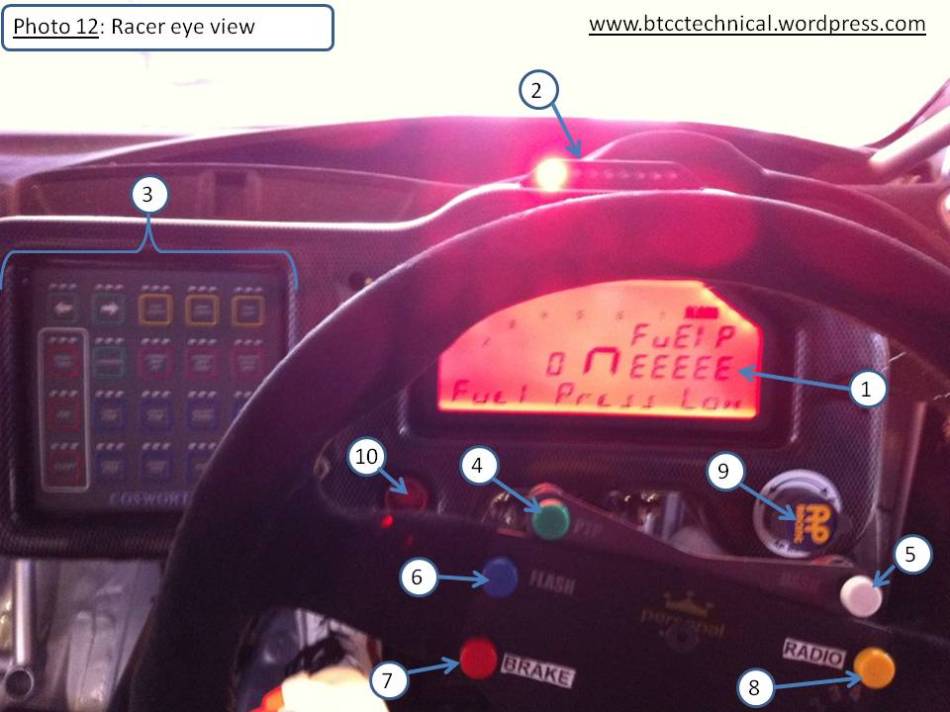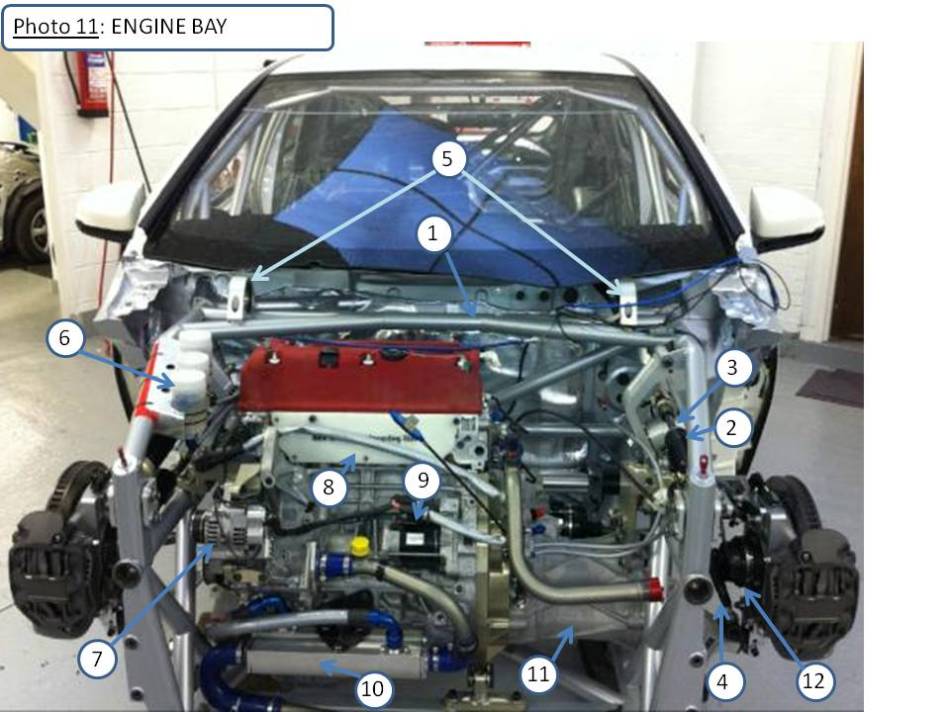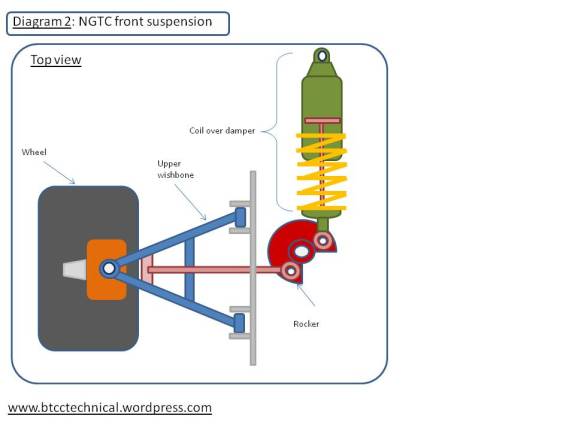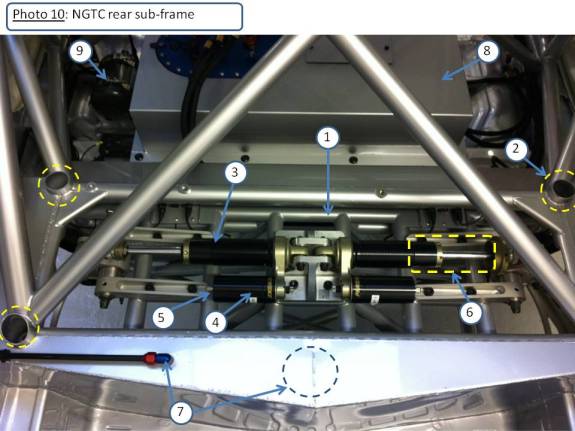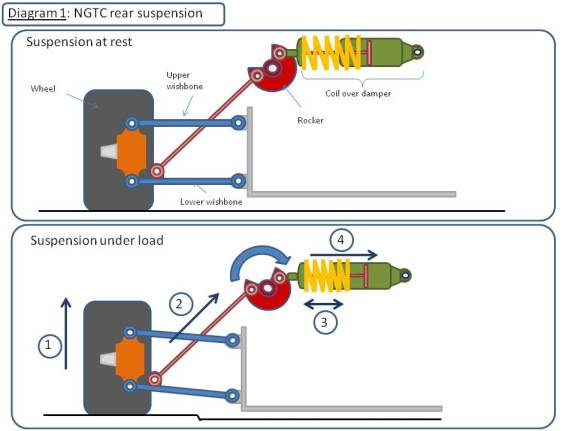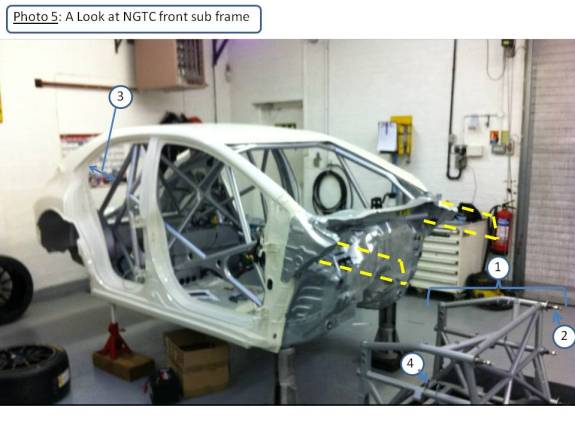During a BTCC race weekend is it common for the drivers and commentators to talk about an “under-steering” or an “over-steering” BTCC car. But what exactly is meant by the terms?
In the following animations we can see Andrew Jordan * demonstrating the two main handling characteristics in his Pirtek Civic**
Under-steer
First of all we will look at “Under-steer” or “being tight” as the Americans would say.
“Under-steer” is when during cornering the front tyres loose traction with the racing circuit whilst the rear tyres still have grip.
As the front wheels steer the car if they loose traction, the car will not steer and will continue to push forward no matter what steering angle is input.
In the below animation the tyres are shown so that steering input can be viewed.
(For clarity no driver correction steering action has been shown in any of the animations.)
Looking at Andrews demonstration, it can be seen that as he enters the corner and turns in the front tyres loose grip and the car continues on-wards away from the racing line and on to the grass. The car wants to go straight on, instead of around the corner.
A few basic things a race engineer may try to do to combat under steer is to soften the front suspension with softer springs, damper settings or a thinner anti role bar to try to increase the front grip( increase the tyre contact patch with the circuit through cornering).
Other options are to increase the rake of the car (raise the ride height at the rear or lower the front ride height) This will cause the center of gravity to shift forward increase the downward force on the front of the car and help increase grip.
Other options to help increase front end grip over rear end grip is to increase front camber and decrease rear camber.
Over steer
Simplistically an “over-steering” car or a “Loose car” is when during cornering the rear tyres loose traction with the race track but the front tyres still have grip and the rear of the car slides outwards with the corner force.
To try to improve the over steering car a race engineer will try to increase the grip at the rear of the car (or decrease the grip at the front) often by softening the rear suspension again my softening damper settings, spring rates or anti-role bars (stabilizing bars).
So in summary an under-steering car means not enough grip at the front and an over steering car means a lack of grip at the rear.
A balanced Car
Finding a good balance for a race car around an entire circuit can be a very difficult challenge for a race engineer and often trying to dial out over steer can result in under steer and vice-versa trying to dial out over steer can result in under-steer.
Improving the car for one corner can also unsettle it for other corners meaning a comprised balance may be the fastest setup for a certain circuit.
With a well balanced car with neither excessive over or under -steer the driver can feel confident to push to the maximum level of grip through the car,
* A virtual Andrew Jordan was used in this blog post. (No Andrew Jordan’s were hurt in the making of this blog.)
** No BTCC cars were damaged in making this blog post.
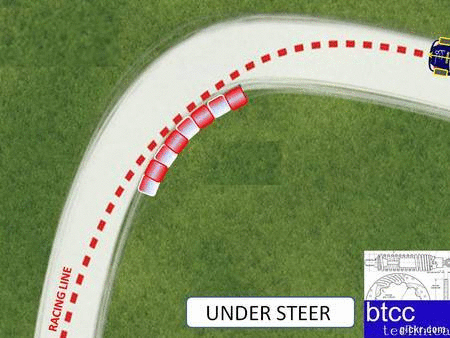
![anim_7e95ab6b-7bcf-8034-199f-2b09ede76d41[1]](https://btcctechnical.wordpress.com/wp-content/uploads/2013/03/anim_7e95ab6b-7bcf-8034-199f-2b09ede76d411.gif?w=575)
![anim_31282621-86f2-aee4-01b5-04dd83396d6c[1]](https://btcctechnical.wordpress.com/wp-content/uploads/2013/03/anim_31282621-86f2-aee4-01b5-04dd83396d6c1.gif?w=575)


